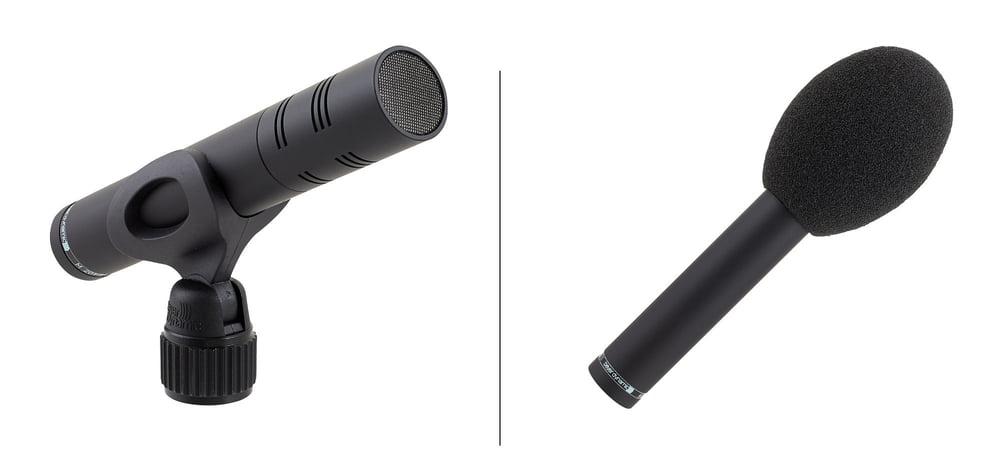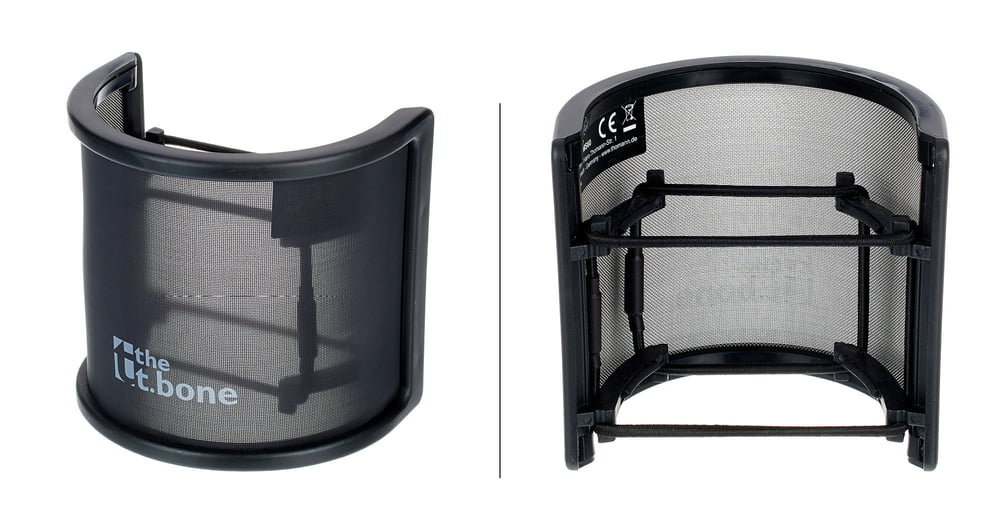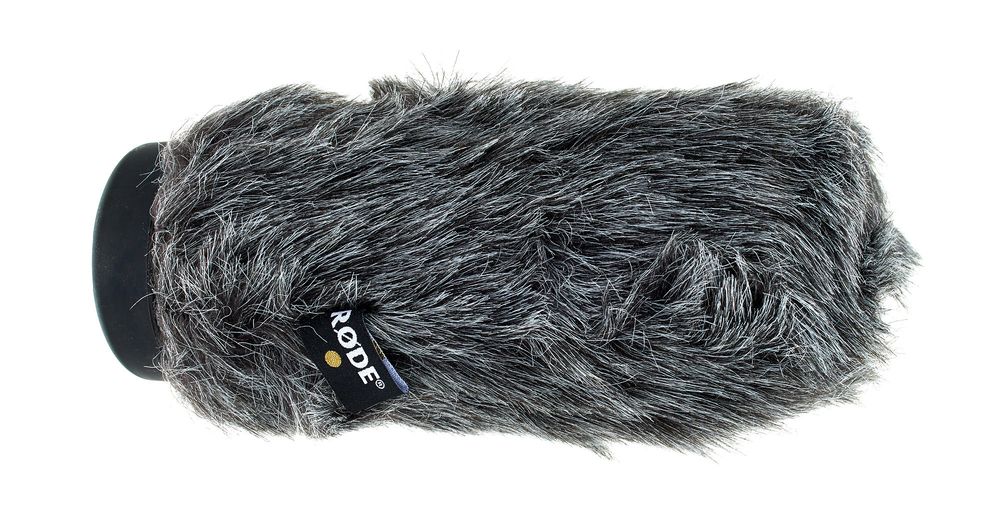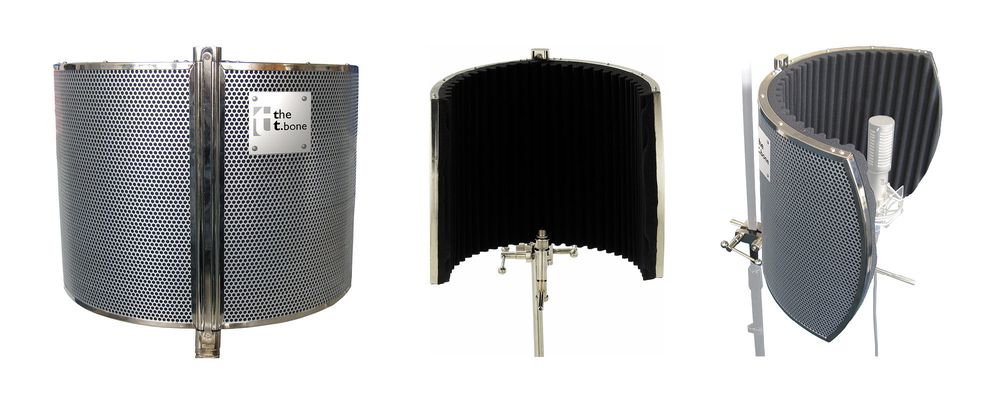4. Acoustic aids: Pop filters and windscreens
Pops and wind noise can be a problem
Pop noises are caused by small bursts of air that are created when a singer or speaker pronounces consonants like P, B, D and T. These are called stop consonants or plosives. And they can actually sound like small explosions! When the burst of air hits the microphone and deflects the diaphragm, the electronics are overwhelmed for a short moment. Wind can have a similar effect.
Foam covers for protection against pops and wind noise
You’re probably familiar with the typical foam windscreens seen on reporter microphones. Many microphones are already protected by the design of their front grille. If this is the case, an additional foam cover offers only slight improvements. Microphones that are primarily intended for recording instruments, but occasionally used for vocals or speech, can be a different story.

Foam covers
For example, the Beyerdynamic M201 is popular for interviews, due to its excellent sound.

order code 10712 - Beyerdynamic M201
A foam cover can be very helpful here. Foam covers are usually used for wind protection. They are much better at keeping out wind noise during outside recordings or live gigs than at eliminating pop sounds.
Pop filters (pop killers)
This useful accessory has many names: pop filter, pop screen, pop killer. They’re called „pop killer“ in the Thomann online shop. Pop filters usually consist of fabric stretched over a ring frame. The popular K&M pop screen has two layers of fabric. Others have a single layer, and there are even pop filters that allow you to select the number of filter stages with a folding mechanism.
Metal mesh pop filters are a newer development. They don’t stop the airflow, but deflect it so it doesn’t hit the microphone. Metal mesh pop filters are highly regarded for their transparent sound. Fabric pop filters are a tried-and-true design and offer better protection from spit.

order code 445885 - the t.bone MS60
Fur windscreens (wind jammers)
For outdoor recordings in film, TV and broadcasting, fur windscreens are a popular choice. They’re also known as wind jammers. Fur windscreens are more effective than foam covers. The air gets caught up in the fine hair and gets scrambled and slowed down before it reaches the microphone diaphragm. Even on days with light winds, a fur windscreen is essential for clean outdoor recordings. Fur windscreens tend to be pretty expensive and only fit a small number of microphones.

order code 217436 Rode WS6
Mic Screens
The direct sound from the sound source is only part of the story: All microphones also pick up ambient sound. In rooms that aren't acoustically optimized, reflections can make the signal sound muddy or colored. One possible remedy is a mic screen, also known as a reflection filter. These are curved screens that are placed behind the microphone. They often include a microphone mount, the microphone and mic screen can be mounted on the same stand. While mic screens can work very well, they’re no replacement for an acoustically treated room.

order code 209023 - the t.bone Micscreen Portable absorber diffusor
There are also foam screens in various sizes, which enclose the microphone or, in some cases, the singer or speaker.






